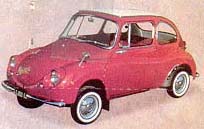
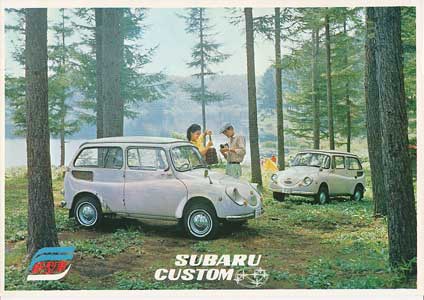


The Subaru 360 was introduced May, 1958 as a 2-door sedan with a 356 cc air-cooled 2-cylinder 2-cycle rear engine, placed transversely. The suspension featured torsion springs front and rear together with a left/right connected coil spring, the rear axle was a swing axle. There was also a version with open roof and one with the rear side windows to be folded down to ease loading. The wheelbase was 180 cm. By October, 1960 the Subaru 450 was added with a 423 cc engine and a length of 311.5 cm. In August, 1963 a 2-door wagon was added, called Subaru 360 Custom, renamed simply Subaru Custom by September, 1967. In November, 1968 a version with a 36 HP SU twin carburettor was released, the Subaru Young SS.
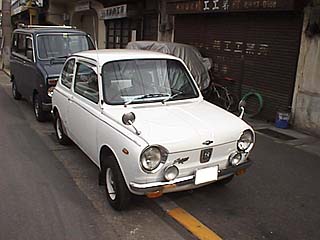
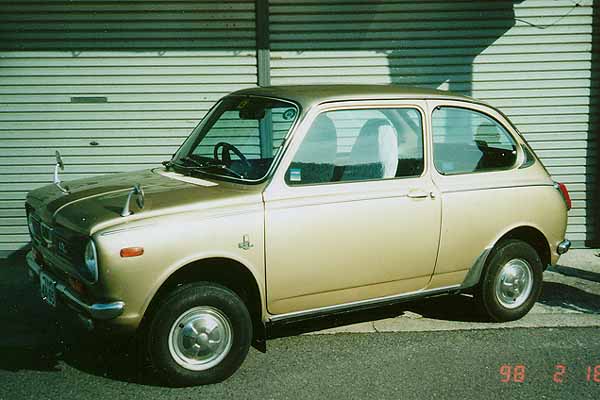
In August, 1969 the pleasant looking Subaru R-2 arrived with a wheelbase of 192 cm, and now independent suspension with torsion springs at the rear, also torsion springs in front. The rear engine was now light-alloy. In February, 1970 arrived a 2-door wagon. By April, 1970 the Subaru R-2 SS arrived with a 36 HP twin choke carburettor, later to be called Subaru R-2 GSS.
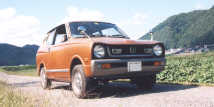
The Subaru Rex, still with rear engine (cast iron as usual) and the same wheelbase and suspension as the R-2 came in July, 1972 as a 2-door sedan. A 4-door sedan arrived in February, 1973 and a 3-door sedan, called van a year later. In the export this car was called Subaru 360. By October, 1973 the engine has become a water-cooled OHC 358 cc, still with 2 cylinders. In a surprising move, due to the new tax regulations the car was widened with 10 cm in May, 1976 and renamed Subaru Rex 5. The length was now 318.5 cm (extended bonnet). The engine was 490 cc. This vehicle was called Subaru 500 in the export. In May, 1977 the engine became a 544 cc, the car was renamed Subaru Rex 550 and in March, 1978 a 2-door sedan with back window to be lifted was added, called the Swingback. In the export these cars were called Subaru 600.

Then in September, 1981 the second generation Subaru Rex switched to front-wheel-drive with a wheelbase of 225.5 cm. Suspension was now coil springs in front and at the rear (independent). The engine remained the same. There were a 3-door and a 5-door sedan, the more commercial versions being called Subaru Rex Combi. By October, 1983 a four-wheel-drive version (with independent rear suspension) was added, the first in the kei car industry (although competitors would follow in the same month) and in December of the same year a turbo arrived. In the export the car was called again Subaru 600 with a length of 324.5 cm (5-door 328.5 cm) and renamed Subaru 700 by September, 1982 when the engine was enlarged to 665 cc. In Europe the car was called Subaru mini Jumbo, in Australia Subaru Sherpa and in China the 5-door sedan is built as Yunque GHK 7060 (544 cc engine), which was widened at the end of 1998 to 146.2 cm (length 336.7 cm) and renamed Yunque GHK 7060A.
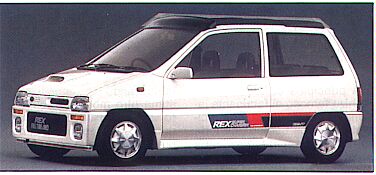
The 3rd generation Subaru Rex (3-door and 5-door sedan) came in October, 1986 with a wheelbase of 229.5 cm. There was now also a 3-valve engine. There was no turbo. In February, 1987 a permanent four-wheel-drive was added. By March, 1988 the 3-valve engine became available with supercharger. In the export the car (with 665 cc engine) was called Subaru M70. In June, 1989 the 2-cylinder engine was replaced by a 547 cc 4-cylinder, which was also available with supercharger. In the export the 4-cylinder was 758 cc and the car was called Subaru M80. In Europe the car was still called Subaru mini Jumbo, in Australia Subaru Sherpa. After the implementation of the new tax regulations in March, 1990 the bonnet was extended and the car was now 329.5 cm long, the engine grew to 658 cc (2-valve) in Japan, and the supercharger finally got the maximum of 64 PS. In China, it is known as Jiangbei Meilu JJ 7090.
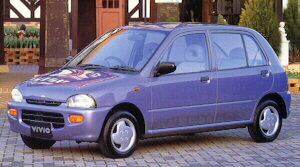
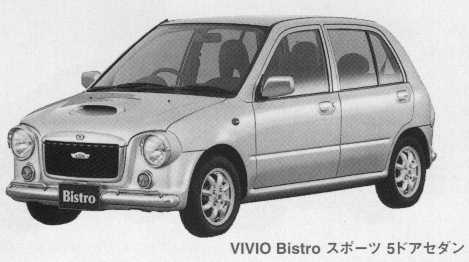
With a wheelbase of 231 cm came in March, 1992 the Subaru Vivio as a 3-door and 5-door sedan. There were two supercharger engines both with 64 PS, the OHC 2-valve and a new DOHC 4-valve. Both part time and permanent four-wheel-drive was offered. In May, 1993 for a short while a 2-door T-top version became available. By November, 1995 a retro version was introduced, the Bistro, the first in the kei car industry with many others to follow. In the export the car had the same name and 658 cc engine as in Japan.

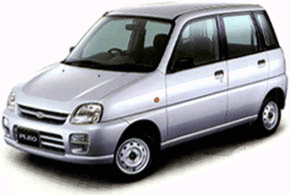
Then, in time with the new standards in October, 1998 and as a successor to the Vivio came the Subaru Pleo with a wheelbase of 231 cm as a 5-door semi-MPV only. The rear suspension is independent with coil springs, also for the four-wheel-drive. There are 658 cc OHC 2-valve engines with and without supercharger as well as the DOHC 4-valve supercharger engine. In June, 1999 arrived the Pleo Nesta with a retro grille.
Please have your comments.
Homepage
Note: Length/Width/Displacement originally 300 cm/130 cm/360 cc . . . by April, 1976: 320 cm/140 cm/550 cc . . . by March, 1990: 330 cm/140 cm/660 cc . . . by October, 1998: 340 cm/148 cm/660 cc
Far East Auto Literature, 1998